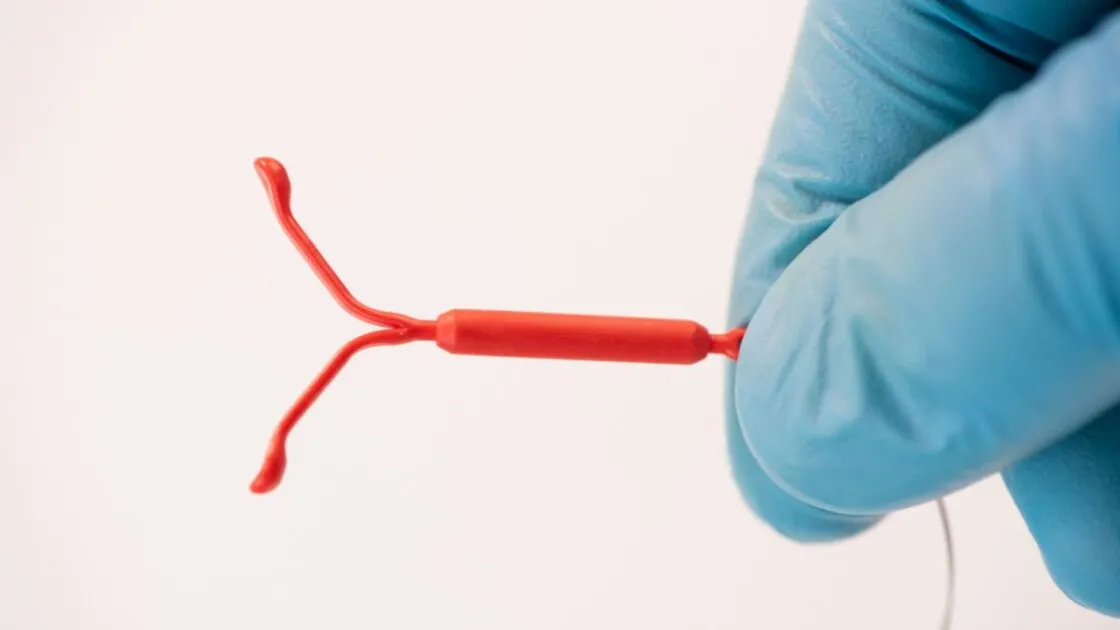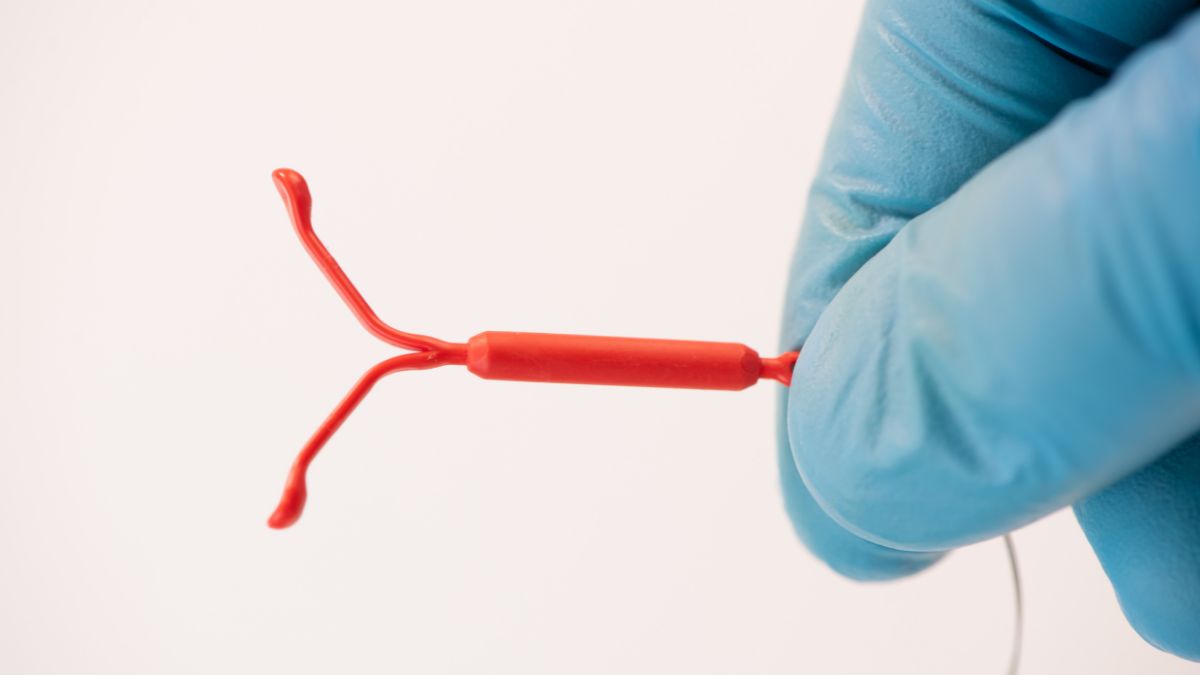In this text, we will discuss everything you need to know about the IUD, including what it is, the different types available, its effectiveness and the possible side effects. Prepare for valuable information about this method of contraception. Let’s get started!
Contents
| No. | Top– the a Topic, | Subtopic |
|---|---|---|
| 1 | What is the IUD? | – Definition |
| – Operation | ||
| – Benefits | ||
| – Myths and facts | ||
| 2 | Types of IUD | – IUD of copper |
| – Hormone IUD | ||
| 3 | Effectiveness of the IUD | – Rate of success |
| – Comparison with other methods | ||
| 4 | Side Effects of IUD | – Common side effects |
| – Risks and complications | ||
| 5 | How the IUD is inserted and removed | – Insertion procedure |
| – Procedure of removal | ||
| – Duration of effectiveness | ||
| 6 | Care and considerations | – Medical monitoring |
| – Tips for proper use | ||
| – When to look for a professional | ||
| 7 . | Frequently Asked Questions | – FAQ 1: Can IUD cause infertility? |
| – FAQ 2: Does the IUD protect against STIs? | ||
| – FAQ 3: Is it possible to get pregnant with the IUD? | ||
| FAQ 4: Can I use the IUD while breastfeeding? | ||
| FAQ 5: Is the IUD reversible? | ||
| FAQ 6: Is the IUD painful to be inserted? | ||
| – FAQ 7: Does the IUD hurt? | ||
| – FAQ 8: How long does the intrauterine device last? |
See also: 8 embarrassing secrets that you should tell your gynecologist
1. What is the IUD?

The IUD, or Intrauterine Device, is a contraceptive method consisting of a small T-shaped device that is inserted into a woman’s uterus. It is made of materials safe for the body, such as plastic or copper. IUD works by preventing fertilization of the egg or making it difficult to implant a fertilized egg in the uterus.
1. Definition
The IUD is a long-term contraceptive method that offers protection against pregnancy for a period ranging from three to ten years, depending on the type of IUD used.
1.2 Operation
When inserted into the uterus, the IUD gradually releases substances (such as copper or hormones) that alter the uterine environment. These changes hinder the survival and mobility of sperm, in addition to making the uterine lining less favorable for the implantation of a fertilized egg.
1.3 Benefits of IUD
The intrauterine device has several advantages as a contraceptive method. Some of the benefits include:
- High effectiveness in preventing pregnancy.
- Long duration of protection.
- Low long-term cost compared to other contraceptive methods.
- It does not interfere with sexual intercourse.
- It can be used by women who are breastfeeding.
- It does not require daily or prior to sexual intercourse.
1.4 Myths and facts about the IUD
There are many myths surrounding the intrauterine device. Let’s clarify some of the most common ones:
- Myth: The IUD can cause infertility.
- Fact: The IUD does not cause infertility. Fertility returns to normal after removal of the IUD.
- Myth: The IUD can get lost inside the body.
- Fact: The IUD is not lost inside the body. A medical professional can easily remove the IUD when needed.
Now that we understand what the IUD is and some important facts about it, let’s explore the different types available.
See also: 10 things you should ask your gynecologist
2. Types of IUD
There are two main types of IUD: copper IUD and hormonal IUD. Let’s look at each of them in detail.
2.1 IUD of copper
The copper IUD, as its name suggests, is coated with copper wires. This type of does not contain hormones. Copper is toxic to sperm, making it difficult to survive and fertilize the egg’s fertilization.
2.2 Horrmone IUD
The hormonal IUD releases progestin hormones in the uterus. These hormones have local effect and act mainly by making cervical mucus thicker, which makes sperm difficult to pass through. They can also inhibit ovulation in some women.
The choice between the copper IUD and the hormonal IUD will depend on the individual preferences and needs of each woman. It is important to discuss with a health professional which option is the most suitable for you.
See also: Endometriosis affects about 7 million women in Brazil
3. Effectiveness of the IUD
The intrauterine device is one of the most effective contraceptive methods available today. Its success rate in preventing pregnancy is high. We will better understand the effectiveness of the IUD compared to other contraceptive methods.
3.1 IUD success rate
The success rate is impressive. The intrauterine copper device is estimated to have a failure rate of less than 1%, while the hormonal IUD has a failure rate of less than 0.3%. This means that for every 100 women who use the IUD, less than 1 or less than 0.3 women, respectively, will become pregnant in one year of use.
3.2 Comparison with other methods
Compared to other contraceptive methods, the IUD has a very high efficacy. For example, the birth control pill has a failure rate of approximately 9%, while male and female condoms have a failure rate of around 18%. Importantly, the effectiveness of any method of contraception can vary depending on the correct and consistent use.
Also see: How to differentiate cervical mucus from vaginal discharge?
4. Side Effects of IUD
Like any method of contraception, the intrauterine device can have side effects. It is essential to be aware of these effects before opting for the IUD as a contraceptive method. Let’s explore the most common side effects.
4.1 Common side effects
- Irregular bleeding: Some women may experience more heavy menstrual bleeding or irregular periods during the first few months of IUD use. However, this usually resolves over time.
- Colic: IUD, especially copper IUD, can cause more intense uterine colic during the menstrual period. However, the intensity of the cramps can vary from woman to woman.
- Changes in menstrual pattern: Some women may notice changes in the pattern of their menstrual cycles after IUD insertion. This may include shorter, longer periods, or even the absence of menstruation.
4.2 Risks and complications
Although the risks and complications associated with the intrauterine device are rare, it is important to be aware of them. Some possible risks and complications include:
- Uterine drilling: In very rare cases, the IUD can pierce the wall of the uterus during insertion. This risk is higher in women who have a retroverted uterus (reclining back) or during insertion by a professional without experience.
- Infection: Although rare, the IUD may slightly increase the risk of infection in the uterus during the first few weeks after insertion.
It is important to note that most women who use the intrauterine device do not present complications. However, it is critical to be aware of the possible risks and contact a health care professional if any concerns arise.
Repetition abortion: what are the possible causes?
5. How it is inserted and removed
Insertion and removal of the IUD should be performed by a trained medical professional. Let us understand how these procedures are performed.
5.1 Procedure for insertion
Insertion of the intrauterine device is a relatively simple and rapid procedure. It is usually done in the doctor’s office. The medical professional will begin by cleaning the cervix and then use a device to correctly position the IUD in the uterus. Some moments of discomfort can be felt during insertion, but it is usually well tolerated.
5.2 Removal procedure
Removal is also carried out in the doctor’s office. The medical professional will use a special device to carefully locate and remove the IUD. The procedure is quick and usually painless.
5.3 Duration of effectiveness
The duration of the efficacy of the intrauterine device varies depending on the type. Copper IUD can be used for up to 10 years, while the hormonal IUD can be used for up to 3 to 5 years, depending on the brand and the specific type.
9 things the body does every day that science can not explain
6. Care and considerations
There are some important precautions and considerations when using the intrauterine device. We’ll discuss them briefly.
6.1 Medical follow up
It is essential to make regular visits to the health care professional to check if the intrauterine device is in the right place and functioning properly. These appointments are also an opportunity to discuss any concerns or symptoms you may have.
6.2 Tips for proper use
- Periodically check the wires to make sure it is in the correct place. The hair should be hung slightly inside the vagina.
- If you experience severe pain or persistent abdominal discomfort, contact a medical professional immediately, as this may indicate a possible complication.
6.3 When looking for a professional
You should contact a medical professional if:
- Feeling severe pain or persistent abdominal discomfort.
- Notice heavy or abnormal bleeding.
- Have any concerns or doubts.
Always remember to seek medical advice for any issue related to the intrauterine device.
See also: 12 Things to be kept secret
7. 7. Frequently Asked Questions
Here are some frequently asked questions about the intrauterine device:
FAQ 1: Can IUD cause infertility?
No, the intrauterine device does not cause infertility. After removal, fertility usually returns to normal.
FAQ 2: Does the IUD protect against STDs?
No, the intrauterine device does not protect against sexually transmitted diseases. To protect against STIs, it is necessary to use condoms.
FAQ 3: Is it possible to get pregnant with the IUD?
Although it is rare, there is the possibility of getting pregnant with the intrauterine device. If pregnancy occurs, it is important to see a medical professional immediately.
FAQ 4: Can I use IUD while breastfeeding?
Yes, the intrauterine device can be used during breast-feeding. It is a safe contraceptive option for women who are breastfeeding.
FAQ 5: Is the IUD reversible?
The intrauterine device is reversible. It can be removed at any time by a medical professional, and your fertility usually returns to normal after removal.
FAQ 6: Is the IUD painful to be inserted?
The experience of pain during IUD insertion may vary from woman to woman. Some women report mild discomfort, while others may experience more pain. The doctor may use local anesthesia or recommend painkillers to minimize discomfort.
FAQ 7: Does the IUD hurt?
Some people report mild cramps, pain of pressure, or pain similar to menstrual cramps in the first few days or weeks after placement. These symptoms usually decrease with time. If the pain persists or becomes severe, it is important to contact the doctor who has placed the intrauterine device for evaluation.
It is important to remember that the intrauterine device is an effective form of long-term contraception and the benefits can overcome the initial discomfort. Each person reacts differently, so it is essential to discuss any concerns or questions about the IUD with a health care professional before placement.
FAQ 8: How long does the intrauterine device last?
The duration of the intrauterine device may vary depending on the type of IUD you choose. There are different models available on the market, each with a specific duration. Here are some duration estimates for the most common types of IUD:
- Copper IUD (non-hormonal): Copper IUDs can last for 5 to 10 years, depending on the model. It is important to check with the manufacturer of the specific IUD to confirm the exact duration.
- Hormonal IUDs: Hormonal IUDs usually last 3 to 7 years, depending on the model. Again, it is important to check the information provided by the manufacturer to know the exact duration of the hormonal IUD chosen.
It is important to remember that even if the recommended duration is reached, it is necessary to consult a health care professional to check if the IUD is still in place before deciding to remove or replace it. The doctor may do this check during regular follow-up appointments.
In addition, the intrauterine device can be removed at any time if you decide that you wish to discontinue the use of the contraceptive method or if there is any medical reason that justifies removal before the period.
It is recommended to discuss with your doctor the available options, including the duration of each one, to determine which is best suited to your needs and preferences.
Conclusion
In this article, we explore all the essential aspects of the intrauterine device. We discuss what is, the different types available, its effectiveness, the possible side effects and the necessary care for its proper use. IUD is a highly effective and safe contraceptive method, offering women a long-term option to avoid pregnancy.
Always remember to consult a medical professional for personalized guidance. Each woman is unique and may have specific needs that should be considered when choosing a contraceptive method.
We hope that this article has provided valuable information answered all of your questions. If you have any further questions, do not hesitate to seek medical advice. Take care of your health and make informed decisions about contraception.
Follow our Google News posts.

Sign up for our newsletter and stay up to date with exclusive news
that can transform your routine!
Warning: Undefined array key "title" in /home/storelat/public_html/wp-content/plugins/link-whisper-premium/templates/frontend/related-posts.php on line 12
Warning: Undefined array key "title_tag" in /home/storelat/public_html/wp-content/plugins/link-whisper-premium/templates/frontend/related-posts.php on line 13




